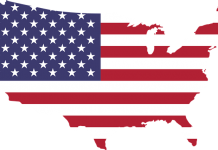In today’s market, products come with an array of features that promise to enhance our lives and make our tasks easier. However, not all features are created equal, and determining which ones are essential can be a daunting task. Let’s explore how to effectively compare product features and make informed decisions that align with our needs.
Identifying Your Needs
Before diving into feature comparisons, it’s crucial to identify your specific needs and priorities. Consider the primary purpose of the product and the specific tasks it needs to perform. By understanding what you truly require, you can focus on the features that will genuinely enhance your experience, like the ones on offer hier.
Differentiating Features from Necessities
Not all features are necessities. While some features may seem appealing, they may not be crucial to the functionality or performance of the product. It’s essential to differentiate between features that are essential and those that are simply nice to have. Prioritize the features that directly align with your needs and disregard the ones that are not necessary.
Research and Comparisons
Thorough research is key to effectively comparing product features. Take the time to read product descriptions, reviews, and specifications from reliable sources. Look for reviews that specifically address the performance and usability of the features you are interested in. This will help you gain a better understanding of how well the features actually work and whether they meet your requirements.
Consider Long-Term Use
When evaluating product features, it’s important to consider the long-term use of the product. Think about whether the features will remain relevant and useful in the future. Some features may seem impressive initially but lose their value over time. Focusing on features that have long-term relevance will ensure that you get the most out of your investment.
Evaluate Ease of Use
While a product may boast a multitude of features, if they are difficult to use or understand, they may end up being more of a burden than a benefit. Evaluate the usability and user-friendliness of the features. Look for products that offer intuitive interfaces and clear instructions to maximize the usefulness of the features without adding unnecessary complexity.
Consider Budget Constraints
While it’s tempting to opt for products with all the latest and greatest features, it’s important to consider your budget constraints. Determine the budget you are willing to allocate for the product and find a balance between essential features and affordability. Remember that sometimes simplicity can be just as effective as a product with numerous features, without the added cost.
Seek Expert Opinions
If you are unsure about the importance or effectiveness of specific features, seeking expert opinions can provide valuable insights. Industry professionals, product reviewers, and technology experts can offer expert advice and recommendations based on their knowledge and experience. Their expertise can help you make informed decisions and avoid being swayed by unnecessary features.
Conclusion
Effectively comparing product features requires careful consideration and prioritization of your needs. By differentiating between essential features and nice-to-have additions, conducting thorough research, considering long-term use and ease of use, evaluating budget constraints, and seeking expert opinions, you can make informed decisions that align with your requirements. Remember, it’s not always about the bells and whistles, but about finding the features that truly enhance your experience and deliver the best value for your investment.





























